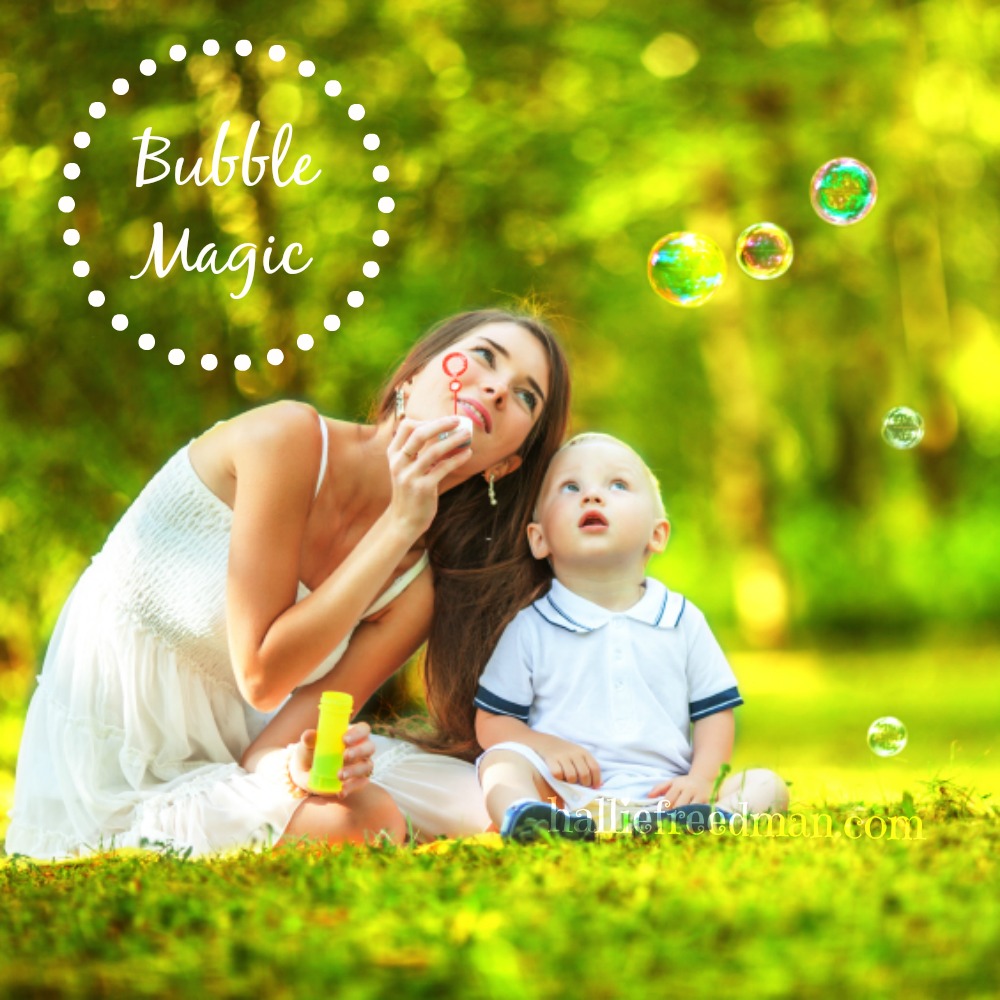Bubble Magic
By Hallie Bulkin
There is nothing more magical than…BUBBLES. As a pediatric speech language pathologist, bubbles are something I keep in my tool belt at all times! In the speech world bubbles are key to communication.
Why are bubbles MAGICAL?
I have seen non-verbal children and children with very limited language skills make spontaneous requests and vocalize to request bubbles, pop, and more! Usually these start out as approximations, “buh” or “buhbuh” for bubbles, “pah” for pop and “mmmm” or “mo” for more. The best part is that the communication is intentional and becomes more consistent overtime as bubbles are continuously introduced.
I am often asked, “Why do children love bubbles?” Here’s the truth of the matter…I don’t know! All I know is bubbles work and are highly motivating. Therefore, they are MAGICAL! Think about it for a minute. We take something as simple as soapy water, dip a wand in it, put the wand in front of our mouth and blow to create shiny round bubbles that float until they pop. It’s a pretty simple process and I have no idea why they are so intriguing but they are, so let’s run with it!
How to use bubbles at home/in therapy
Language skills are enhanced when bubbles are introduced to the therapy setting. So how can you use bubbles to help your child’s speech and/or language skills? Here are some suggestions:
- Speech Sounds. Bubbles are GREAT for addressing early sounds /b/, /p/, /w/.
- You can work on /b/ for “buh”, “buhbuhbuhbuh”, and “bubbles”
- /p/ is always fun to practice in “POP” as you make a game out of popping the bubbles
- /w/ is great as you round your lips for /w/ just like when you go to blow bubbles out of the bubble wand. Making the lip rounding shape for blowing bubbles can help draw awareness to the lips and the shape of the lips (separate from the tongue) needed to make a /w/ sound like in “water”, “woah”, “Weeee”, etc
- Request/Label. Using language to request or label can be easily addressed and quickly reinforced with bubbles. If a child asks for more or labels bubbles, it’s easy to blow a bubble to reward their actions that you want to continue (e.g., more labeling and/or requesting).
- Increase utterance length. Most children get to the point where they move beyond one-word phrases. When introducing two word phrases, bubbles can help since they are so highly motivating. For example, if a child say’s “bubbles” you can model, “want bubbles” to have them repeat before giving them more bubbles. This works as you expand beyond two word phrases as well.
- Action words. Common action words used when playing with bubbles might include: blow, pop, clap, stomp, poke, hit, catch, go, etc. Think of thinks that you can do with the bubbles and make a game out of it! I always start with POP and go from there.
Bubbles are MAGICAL…and cheap! You can make your own or buy them for $1 at many of your local stores. Try it today. It’s a great spring activity both inside and outside of the house!
With Love,
Hallie
Note: This post was first published on DCLadies.com on April 22, 2014.

